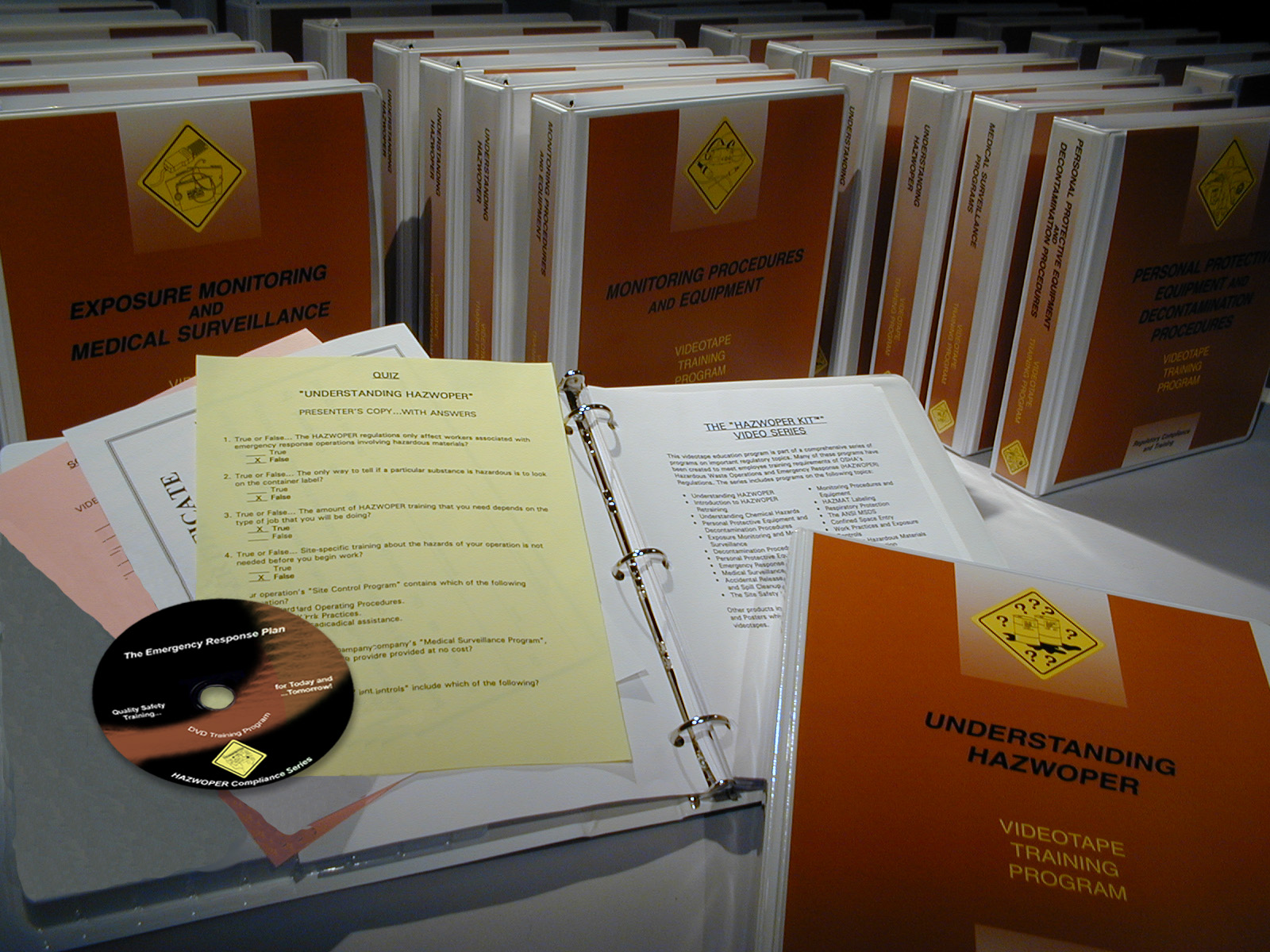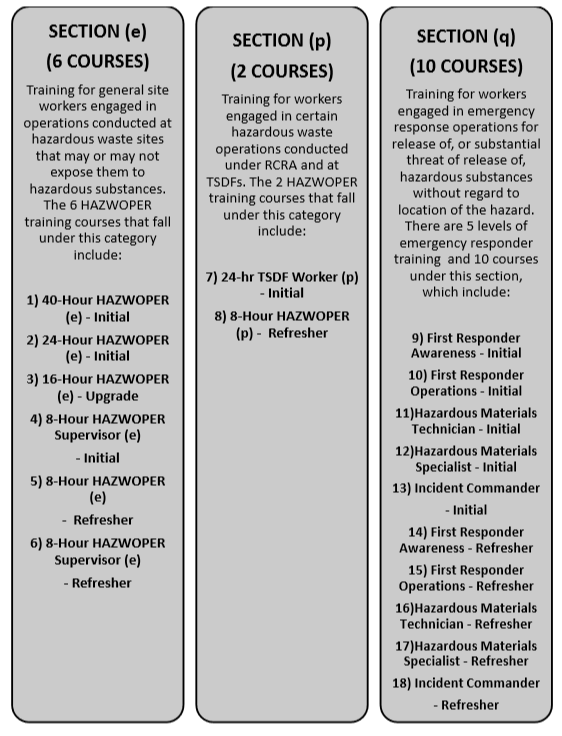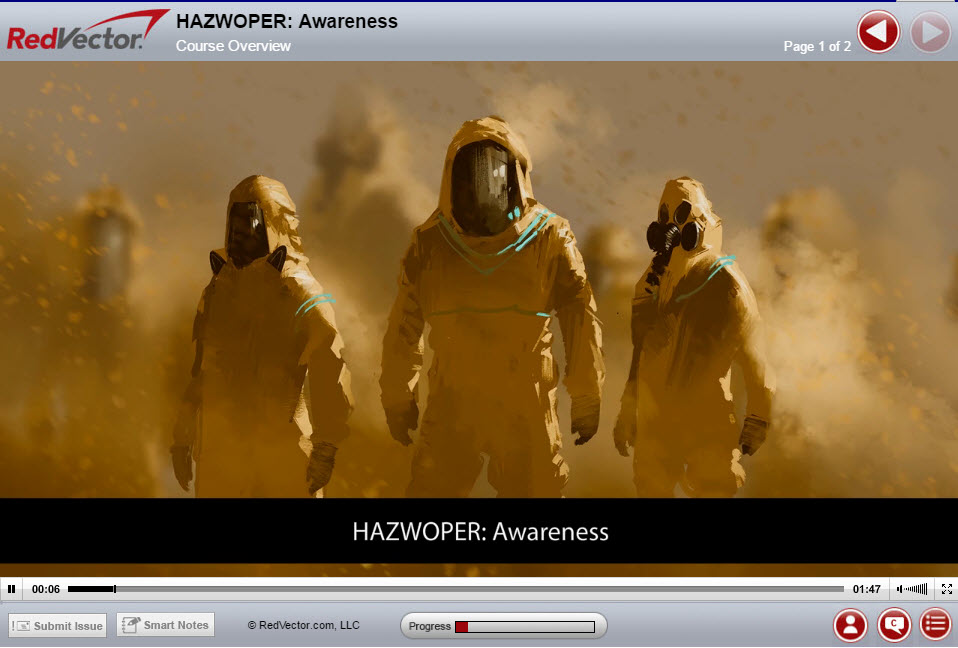How Many Sections Are In The Hazwoper Regulation
Incredible Hazwoper Training: Ensure Safety and Compliance
Are you familiar with Hazwoper? It stands for Hazardous Waste Operations and Emergency Response and is a set of regulations set forth by the Occupational Safety and Health Administration (OSHA). Ensuring the safety of workers and the surrounding environment, compliance with these regulations is crucial. In this article, we will explore the Hazwoper regulation and its various sections that play an integral role in workplace safety. Let's dive in!
Section 1: Understanding the Purpose of Hazwoper Regulations

Let's begin our journey by examining the significance of Hazwoper training. The primary objective of Hazwoper regulations is to protect the workers engaged in hazardous waste operations and emergency response activities. By establishing specific standards and guidelines, Hazwoper ensures that workers are equipped with the necessary knowledge and skills to mitigate potential hazards in the workplace.
HAZWOPER training plays a vital role in enhancing worker safety and reducing occupational risks. It covers a wide range of topics, including hazard recognition, personal protective equipment (PPE), decontamination procedures, emergency response protocols, and more.
Section 2: In-Depth Analysis of Hazwoper Training

Now, let's take a closer look at the different aspects of Hazwoper training and its importance in promoting a safe working environment.
1. Basic Hazwoper Training: Laying the Foundation for Safety
The Basic Hazwoper Training is a fundamental course designed to provide workers with an understanding of hazardous substances and the necessary precautions to take while working with them. It typically consists of a 40-hour training program that includes both classroom instruction and hands-on exercises.
During this training, workers learn about various hazard types, including toxic substances, flammable materials, corrosive chemicals, and reactive substances. They are also educated about the appropriate personal protective equipment (PPE) to wear in different hazardous situations. With this knowledge, workers are well-prepared to identify potential risks and take appropriate preventive measures.
2. Supervisor and Managerial Training: Leading the Way to Safety
Supervisors and managers hold a crucial role in ensuring the implementation of safe work practices and the enforcement of Hazwoper regulations. Supervisor and managerial training provide these individuals with the necessary knowledge and skills to effectively lead and manage hazardous waste operations.
This training enhances their understanding of Hazwoper requirements, emergency response procedures, and incident management. It equips them to recognize and control potential hazards, conduct thorough risk assessments, and oversee decontamination processes. With the ability to make informed decisions regarding worker safety, supervisors and managers play a pivotal role in creating a culture of safety within their organizations.
3. Specialist Training: Becoming an Expert in Hazardous Waste Operations
Specialist training is specifically designed for individuals who perform specialized tasks or handle specific types of hazardous substances. These workers require a deeper level of understanding and expertise to ensure their personal safety and the safety of their surroundings.
Specialist training covers topics such as confined space entry, hazardous material handling, underground storage tank management, emergency spill response, and more. By gaining in-depth knowledge in their respective areas of expertise, these specialists are equipped to handle complex situations involving hazardous materials confidently.
Frequently Asked Questions (FAQ) About Hazwoper Training
1. Why is Hazwoper training necessary?
Hazwoper training is essential to ensure the safety of workers engaged in hazardous waste operations and emergency response activities. It equips them with the knowledge and skills required to identify and mitigate potential hazards in the workplace.
2. Who should undergo Hazwoper training?
All workers involved in hazardous waste operations, emergency response activities, and those who are potentially exposed to hazardous substances must undergo Hazwoper training. This includes workers in industries such as manufacturing, construction, healthcare, transportation, and more.
3. How often should Hazwoper training be refreshed?
OSHA recommends that Hazwoper training should be refreshed annually to ensure that workers remain up-to-date with the latest standards, procedures, and regulations. However, specific job tasks and responsibilities may necessitate more frequent refresher training.
4. Are there any exemptions from Hazwoper training?
While Hazwoper training is required for most workers in industries involving hazardous waste operations, there are a few exemptions. For example, workers who are exposed to hazardous substances only during routine deliveries and non-emergency situations may not require Hazwoper training.
Conclusion
In conclusion, Hazwoper regulations are instrumental in promoting workplace safety and ensuring compliance with OSHA standards. Through comprehensive training programs, workers gain the necessary knowledge and skills to proactively identify hazards, use appropriate protective measures, and respond effectively to emergencies.
By investing in Hazwoper training, organizations prioritize the well-being of their employees and the surrounding environment. Remember, safety should always be the top priority in any hazardous waste operation or emergency response activity!
Sources:
- What Is 40 Hour HAZWOPER Training & Why It’s Important? (URL: source)
- HAZWOPER: Awareness (URL: source)
HAZWOPER: Complete 40-Hour Training Package - National Safety Compliance
 Image Source : osha-safety-training.net
Image Source : osha-safety-training.net HAZWOPER Training – Certification Requirements
 Image Source : hazwoper-osha.com
Image Source : hazwoper-osha.com hazwoper certification osha
Safe Lifting DVD Program | $ 229.00 USD
.jpeg) Image Source : weeklysafety.com
Image Source : weeklysafety.com What Is 40 Hour HAZWOPER Training & Why It’s Important?
 Image Source : hazwoper-osha.com
Image Source : hazwoper-osha.com hazwoper training osha hour important why
HAZWOPER Training Levels & Course Selection HazmatStudent
hazwoper training levels course demo slide sample courses
HAZWOPER Regulation In The Power Generation Industry - Salvation Safety
 Image Source : salvationsafety.com
Image Source : salvationsafety.com 'HAZWOPER: Personal Protective Equipment' Computer Or Web Based Program
mas cbt hazwoper protective personal equipment
HAZWOPER: Awareness
 Image Source : www.redvector.com
Image Source : www.redvector.com safety training hazwoper redvector awareness osha
Hazwoper: awareness. Hazwoper training levels & course selection hazmatstudent. Hazwoper training levels course demo slide sample courses. Safe lifting dvd program. Hazwoper regulation in the power generation industry